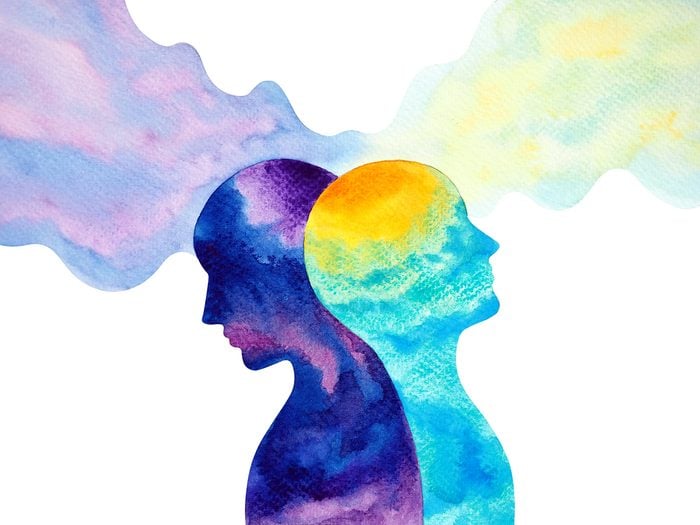“I Was Fired Because of My Mental Illness”

And this is how I fought back.
In September of 2018, I was fired from my job. It was an exciting, new position at a large employer, and when I accepted the role, I’d felt ready for the challenge. I’d worked in the legal industry for nearly a decade, and I was good at it. I’d built a career managing busy practices for my supervisors, balancing their demanding schedules and dealing with the court systems. I was the first point of contact for many clients. I was used to fast-paced work environments with lots of moving parts, I knew what I was doing and I felt confident. I’d certainly never been fired before.
But I also live with bipolar disorder, generalized anxiety disorder and agoraphobia. I regulate my day-to-day by keeping a close watch on my moods and somatic symptoms. I take my medications, visit my doctor when needed and attend my therapy appointments. After 20 years of dealing with this, I’ve become a bit of a self-management expert.
As the days went by in my new job, anxiety started creeping in. Despite the positive feedback I was receiving from my supervisors and colleagues, I began to feel incompetent, and it was affecting my ability to work quickly and under pressure, which is the norm in the legal field. I also heard harmful slanders against folks with mental illness, and working in a large open-concept space was triggering my agoraphobia. For me, this manifests as panic attacks whenever I feel like people can see me, judge me or otherwise threaten my safety.
(Related: 14 Virtual Care Services in Canada You Need to Know About)
My panic attack at work
One Friday afternoon, panic hit. It started around my jaw—my muscles tightening, my teeth chattering. It didn’t take long for the panic attack to overwhelm me. My desk suddenly felt unfamiliar, the space hostile.
As I tried to catch my breath, furiously wiping away tears that just kept coming, my supervisor walked by. She stopped and asked if I was okay. “I’m having a panic attack,” was all I could whisper. “I’m okay, though.” With a nod she continued on her way. No one else came by. After a while, I was able to work through it alone, but the rest of my day, unsurprisingly, wasn’t very productive. No one ever followed up with me.
The following week, I attended a mandatory, in-person seminar on the Accessibility for Ontarians with Disabilities Act, which took place in a boardroom filled with about two dozen people. During the seminar, I noticed that there was barely a mention of mental illness. This didn’t seem appropriate. I’d been navigating misperceptions of mental illness in the workplace long enough to know to speak up when I could.
Mental health emergencies in the workplace
Then and there, I asked if anyone in the firm was trained in the event of a mental health emergency, but there wasn’t an answer. I followed up with inquiries about mental health accommodations. Again, no answer. The group benefits offered a few hundred dollars a year for therapy, and most prescriptions were covered. But those types of resources weren’t really what I was concerned about. I needed to know that if I experienced another panic attack, there would be some kind of support. What if I needed some time off, or to work from home? Was that available? And, deep down, I needed to know whether I could feel safe enough to be myself, mental illness included.
Three hours later, my employment was terminated.
In an empty boardroom—the same boardroom I’d initially been interviewed in—my supervisor told me that it had been a difficult decision, but it was best for all parties. Best for whom? Why was I being fired? What had I done wrong? Why didn’t anyone say anything, coach me, train me? Why was this such a surprise? I was told I wasn’t learning fast enough, not taking enough notes and that I’d been seen crying at my desk. “But I was having a panic attack,” I shot back. “You knew that.” She simply smiled and said, “See? This job isn’t for you.”
As I was escorted out of the office, seething with fury, I wondered whether there would ever be a place for someone like me in the working world. If the only visible sign of my disability—a panic attack—could be seen as a reason to fire me, what hope was there?
When I got home, I told my partner all the reasons why this simply wasn’t okay. How could they so blatantly disregard my rights? If that job wasn’t for me, what job would be?
My partner sat there, quietly listening, until he said, “Well, what are you going to do about it?”
Taking legal action
With his support, I hired a lawyer and filed an application with the Human Rights Tribunal of Ontario. The policies differ slightly from province to province, but the Canadian Human Rights Act protects employees with disabilities from discrimination, including from termination due to disability, even if the employee is within the probationary period (often the first three months), like I was. But lawyers are expensive, usually hundreds of dollars per hour, and the former employee—who is now without a paycheque—must shoulder it. Employers typically have more funds to fight back, and a case can drag on for months, even years.
If a case settles privately, the dismissed party might have to sign a non-disclosure agreement, and it’s possible the employer would not be required to admit any wrongdoing. In these cases, because no one can speak out, it’s likely that nothing will change and the discrimination continues.
Yes, employees can elect to disclose their disability at the outset of a new job. But this wasn’t something I had ever felt comfortable with, due to the stigma associated with mental illness.
And the data backs me up: The federal Office of the Ombudsman for Mental Health and Employee Well-Being reported in 2017 that 82 percent of the confidential meetings they held over a six-month period were with concerned employees rather than employers (and it was mostly women—68 percent were female). The report found that when workers do address their mental health challenges and requirements with employers, they risk facing stigmatization or negative career repercussions. Because of this, employees may hide their diagnoses instead of seeking accommodations. So where does that leave people with mental illness? What security do we have?
Finding a new path
The day after I was fired, a friend told me about an editor at a national newspaper who was taking pitches. I didn’t even know what a pitch was, but I cobbled something together and sent it off. I received a response within the hour: This sounds great. I can give you 600 words. Also included was a rate and a deadline. I couldn’t believe it. I started writing immediately. That assignment opened a door: I learned that people wanted to hear my opinions. Not only that, to my complete disbelief, they were also willing to compensate me for my writing.
From that thought, another one began to percolate: While legal recourse is impossible for many folks with mental illness, what I had was my ability to communicate, which could help others feel less alone. I continued to write about mental health, using my own experience. One of my essays even won an award. This is what I learned: Being fired was hard, and fighting back is even harder. Justice can be so far out of reach that silence and compliance feel like the only viable next step. But maybe that’s not good enough. What if I dared to use my own voice? Could I possibly become louder than the wrongs levied against mentally ill folks? Could this be my form of advocacy?
I’ve now left my former career behind to pursue my own writing projects and mental health awareness work. I know that what I send out onto the internet reaches thousands of people, and that makes me proud. This is exactly the life I’ve wanted all these years. Some days, I don’t know how I got so lucky. It took me a few years to realize that my former supervisor’s comment—this job isn’t for you—was in fact true, but not in the way she had intended. That job wasn’t meant for me because I was meant for a lot more.
Next: Could Laughter Be the Best Medicine for Stress and Anxiety?




